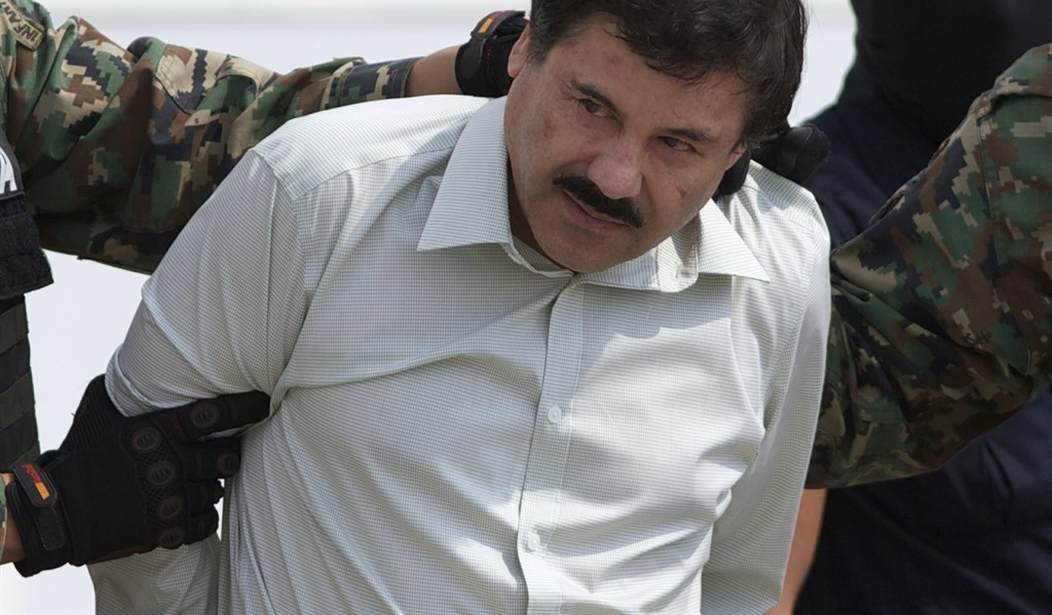Mexican cartels have been operating for decades, providing 90% of the cocaine that enters the US, as well as transshipping most of the fentyl to the US that originates in Chinese chemical laboratories. Besides drug-running, the cartels have expanded their repertoire to include sex-trafficking, gun-running and other criminal activities that pose direct threats to US national security. Here is a brief overview of the four main Mexican drug cartels in order of their relative primacy in terms of size, reach, and negative impact on the US:
1. Sinaloa Cartel. The Sinaloa cartel organized in the late 1980s and headed for many years by Joaquín “El Chapo” Guzmán, who gained notoriety in several Hollywood movies and documentaries. During Guzmán’s reign, Sinaloa became the biggest supplier of illegal drugs to the US. He reportedly made over $12 billion from the drug trade, according to US prosecutors. El Chapo was captured by Mexican authorities in 2016 and extradited to the US where it has been said that he has provided some very useful intelligence to American law enforcement authorities. He is serving a life term in the United States Penitentiary Administrative Maximum Facility (ADX) in Florence, CO. Despite El Chapo’s capture, they still control most of northwest Mexico (Sonora and Chihuahua). The Sinoloa cartel has been linked by independent investigators to the “Arizona mafia,” a group allegedly involved in laundering drug money and political corruption in the US on behalf of Sinoloa.
2. The Jalisco New Generation (CJNG). Founded in 2010, these guys are the main Sinaloa competitors. The Jalisco cartel is one of the main distributors of synthetic drugs, including fentanyl and amphetamines, and their “net worth” in terms of assets controlled is estimated at $20 billion. They reportedly control Mexico’s $1.5 billion avocado industry, too. These people are extremely violent and have a reputation for public attacks/assassinations of Mexican security force leadership and other public officials. As reported in UK’s The Sun, “The US’ Drug Enforcement Administration is even offering a $10,000,000 reward for information that leads to the capture of the CJNG’s leader, El Mencho, which is the highest reward of its kind ever offered.” Their stronghold is the Tierra Caliente area east of Mexico City, but they compete directly with the Sinoloa cartel in Baja California.
3. The Gulf Cartel. This outfit started operations in the early 1980s, focusing on trafficking cocaine and marijuana into the US while later expanding their “services” to include heroin and amphetamines. They have been closely aligned with drug supplier cartels in Colombia. According to InsightCrime, “the Gulf Cartel is still in control of a key criminal enclave in Tamaulipas that allows the group to continue trafficking large drug shipments across the US-Mexico border”Their stronghold is the Yucatan Peninsula and most of the Texas border area (Tamaulipas, Nuevo León, and Coahuila).
4. Los Zetas Cartel (“The Zetas”). This cartel started operations northeast Mexico in the 1990s in as the enforcement arm of the Gulf Cartel, then broke away on their own in 2010 to compete directly, growing greatly in size to compete with the Sinaloa cartel. After two of their leaders were caught a few years ago, the Zetas splintered and formed various alliances with other criminal organizations in Mexico. They are still heavily involved in drug trafficking, as well as sex trafficking and gun-running.
There has been some excellent news in the ongoing “drug war” with the Mexican cartels, as over 600 arrests of cartels have been made, as reported here:
The Department of Justice (DOJ) and Drug Enforcement Administration (DEA) announced Wednesday that more than 600 arrests have been made as a result of an interagency operation cracking down on Mexican cartel activity.
“Project Python,” a DEA-led initiative, targeted members of Cártel de Jalisco Nueva Generación (CJNG). According to the DEA, over the last six months federal law enforcement officials have been monitoring the activities of the accused.
The operation resulted in more than 600 arrests nationwide, 350 indictments and “significant seizures of money and drugs,” according to the agencies.
This is just the latest in a string of battles in the drug war, but it would appear to be much more than window dressing (as some past operations have been dubbed), as well as an excellent sign that the new Mexican president, Andrés Manuel López Obrador, means business in terms of attacking Mexico’s endemic corruption and the cartels. He is a breath of fresh air after a string of PRI presidents who were some of worst and most corrupt in Mexican history, including Enrique Peña Nieto and Carlos Salinas de Gortari. Let’s hope he doesn’t get assassinated for his troubles!
The end.














Join the conversation as a VIP Member